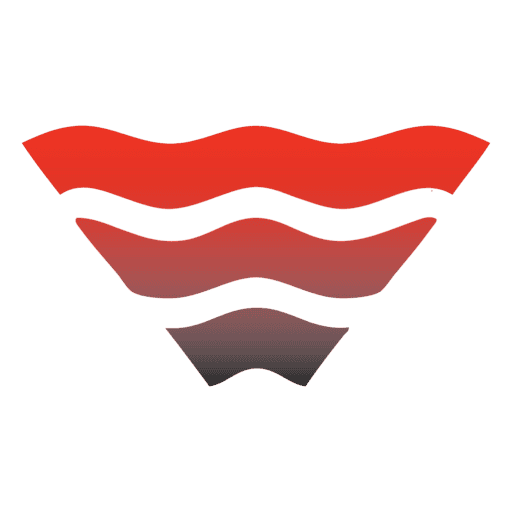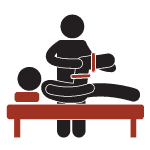Vestibular Rehabilitation services at Alliston physio clinic
Contact UsVestibular Rehabilitation services at Alliston physio clinic
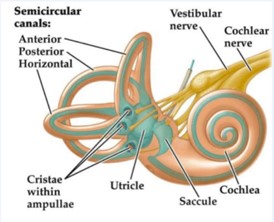
Vestibular rehabilitation is a specialized form of physical therapy designed to address problems with the vestibular system, which is responsible for maintaining balance, spatial orientation, and eye movements. This type of therapy is typically recommended for individuals who experience dizziness, vertigo, imbalance, or other symptoms related to vestibular disorders.
It has been shown that as many as 35% of people over the age of 40 years old have experienced some form of vestibular dysfunction in their life.
Approximately 80% of people over 65 years of age have experienced dizziness and vertigo, and nearly 85% of people over 80 years of age have a vestibular dysfunction.
If you notice the pattern, age-related changes can impact the vestibular system and disrupt an individual’s daily function. With a growing population, vestibular rehabilitation must be available to those who need it.
The term dizziness is used to describe a variety of sensations from lightheaded to swaying to disorientation. A commonly used term is vertigo, which is a specific type of dizziness – defined as the illusion of movement occurring in the environment.
What is the purpose of our vestibular system?
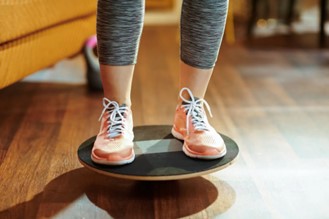
The purpose of our vestibular system is to help us maintain balance, spatial orientation, and stability during movement. It’s a sensory system located in the inner ear, specifically in the vestibular organs known as the utricle, saccule, and three semicircular canals. The key functions and purposes of the vestibular system include:
1. Balance Maintenance
The vestibular system plays a crucial role in detecting changes in head position and movement, which helps us stay upright and maintain balance. This includes activities such as walking, standing, and changing body positions.
2. Spatial Orientation
By providing information about the position of the head in relation to gravity and the environment, the vestibular system contributes to our sense of spatial orientation. This helps us understand our body’s position in space and adjust our movements accordingly.
3. Eye Movement Control
The vestibular system is closely connected to the ocular motor system, which controls eye movements. It helps coordinate eye movements with head movements to maintain stable vision during activities like walking or turning the head.
4. Postural Stability
The information processed by the vestibular system is integrated with input from other sensory systems, such as vision and proprioception (sensation of body position), to help regulate posture and prevent falls.
5. Motion Sensation
The vestibular system is sensitive to linear acceleration (movement in a straight line) and angular acceleration (rotational movement). This sensitivity allows us to perceive and respond to changes in motion, such as riding in a car or turning our head quickly.
What are common causes of dizziness?
- Cardiovascular system dysfunction
- Orthostatic hypotension
- Arrhythmias
- Vasovagal syncope
- Hypertension
- Neurological dysfunction
- Parkinson’s disease
- Stroke or Transient ischemic attacks (TIA)
- Chiari malformations
- Vision dysfunctions
- Refraction errors (i.e. nearsightedness or farsightedness)
- Optic neuritis
- Psychogenic dizziness
- Cervicogenic dizziness
- Vestibular system disorders
- Benign paroxysmal positional vertigo (BPPV)
- Head trauma (concussions, whiplash, sports injuries)
- Vestibular system degeneration
- Vestibular neuritis/labrynthitis
- Endolymphatic hydrops (i.e. Meniere’s Disease)
- Other: ototoxicity, barotrauma, acoustic neuroma, superior canal dehiscence syndrome
What is Benign Paroxysmal Positional Vertigo (BPPV)?
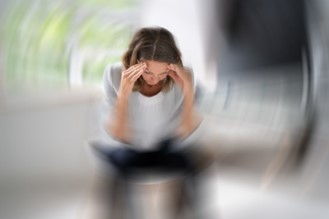
BPPV is the most common cause of vertigo arising from a peripheral vestibular disorder. It accounts for 20-30% of all patients with a history of vertigo, and it is more commonly seen in the elderly. More specifically, it is a biomechanical problem in which one or more of the semicircular canals are inappropriately excited, resulting in vertigo, nystagmus and frequent nausea. The mechanism of the problem involves otoconia that have become displaced from the utricle and float to one or more of the 3 semicircular canals.
Potential causes of BPPV
- Head trauma
- Surgical trauma to the inner ear
- Vascular problems to the inner ear
- Vitamin D deficiency and calcium metabolism issues
Symptoms of BPPV
Typically, the symptoms of BPPV are triggered by looking up, lying down quickly, bending forward and rolling in bed. The symptoms of BPPV will come and go with periods of remission between episodes.
- Vertigo: a sudden sensation of spinning in the environment
- Nystagmus: involuntary eye movements
- Dizziness: feeling of unsteadiness
- Imbalance: feeling unstable, needing to hold on to objects when standing or walking during an episode of vertigo
- Nausea
The different types of BPPV
1. Cupulolithiasis
The dislodged otoconia (crystals) from the utricles adhere to the cupula of the affected semicircular canal. This causes the cupula to be gravity-sensitive with head changes.
2. Canalithiasis
The dislodged otoconia (crystals) from the utricles are free-floating in the endolymph (fluid) within the semicircular canals. When the head is moved, the otoconia moves in the endolymph causing an abnormal pressure within the inner ear.
Assessment of BPPV
1. Anterior and posterior semicircular canals
- Dix-hallpike
- Side-lying test
2. Horizontal canals
- Roll test
Treatment of BPPV
1. Anterior and posterior semicircular canals
- Epley maneuver (canalithiasis)
- Liberatory/Semont maneuver (cupulollithiasis)
2. Horizontal canals
- Barbecue roll (canalithiasis)
- Modified Semont maneuver (cupulollithiasis)
What other components related to vestibular rehab are assessed and treated with physiotherapy?
-
Oculomotor assessments:
- Smooth pursuits
- Saccades
- Convergence and accommodation
- Visual motion sensitivity
Vestibulo-ocular Reflex
- Head thrust test
- Dynamic visual acuity
Balance and Gait assessments
- Static balance testing
- Dynamic balance testing
- Gait assessment (normal speed, increased speed, head turns etc.)
Overall, the vestibular system plays a crucial role in our daily activities by providing continuous feedback about our body’s position and movement in space. Dysfunction or impairment of the vestibular system can lead to various symptoms that can impact daily function.
If you have any of the above symptoms, contact our Alliston physio clinic to get your appointment.
MANUAL AND MANIPULATIVE THERAPY
Our therapists use a variety of hands on techniques to both accurately assess and efficiently treat patients. Specialized training through the Orthopaedic Division of the Canadian Physiotherapy Association (orthodiv.org) allows for accurate diagnosis and faster recovery. Fellows of the Canadian Academy of Manipulative Physiotherapists (FCAMPT) have taken extensive post-graduate training and have received international recognition in hands on techniques.
manippt.org
CONCUSSION MANAGEMENT
At South Simcoe Physiotherapy we have training in the Shift Concussion Management Program (shiftconcussion.ca). Using this program as a basis, we thoroughly assess the individual systems often effected in a concussion using a variety of tests, as well as cognitive tools such as imPact. Once an accurate assessment has been performed, we develop a multi-faceted rehabilitation strategy to return the individual to optimal function.
PELVIC HEALTH
massage therapy
Massage therapy is a form of hands in treatment that affects the body’s soft tissues such as the muscles, connective tissue, ligaments, tendons and joints. Massage therapy can have therapeutic effects on the muscular, circulatory, and nervous systems. For more information on Registered massage therapy please visit: www.rmtao.com
acupuncture
Acupuncture is rooted in Traditional Chinese Medicine and uses tiny needles which are inserted into various points in the body. Acupuncture stimulates the body’s natural healing mechanisms and is effective in treating a variety of conditions including headaches, back pain, neck pain, various overuse and sports injuries. Our therapists have training in acupuncture through Acupuncture Canada ( https://www.acupuncturecanada.org)
RUNNING ASSESSMENT / GAIT ANALYSIS
Gait analysis and Running Assessments can be useful in determining biomechanical irregularities during either walking or running that are either causing or are caused by a certain condition or injury. Gait analysis can also help to identify inefficiencies that may be reducing performance in runners and perhaps predisposing or contributing to injury.
We use multiple tools to analyze a person’s gait. First, we use our physiotherapy backgrounds and knowledge of biomechanics. By observing someone walking/running/using the treadmill (and perhaps recording them) we can often identify these major faults. A biomechanical exam can also aid in this process through identifying structural limitations, muscle weakness and tone, and a variety of other potential faults. Finally, using training from courses such as those taught at The Running Clinic https://therunningclinic.com/en, can help to consolidate all of this information while allowing us to make recommendations on items such as footwear, training schedules, and other information relevant to your specific situation.
IMS/IDN
Intramuscular Stimulation and Integrated Dry-Needling. Both IMS and IDN are forms of dry needling where an acupuncture needle is inserted into a taut band in a shortened muscle or near the nerve root in order to cause a reflex relaxation of the muscle, a micro trauma to stimulate natural healing and create an action potential to restore normal nerve conduction. This technique can be extremely useful to treat chronic pain, myofascial pain syndromes, many sports injuries, and overuse injuries. For more information visit: www.istop.org
exercise prescription
Exercise is an essential part of all rehabilitation programs. In order to restore normal muscle length and strength, correct biomechanical faults and return to function, exercises need to be specifically tailored to suit individual needs.
custom bracing
Our clinic is pleased to offer custom braces to aid in conditions such as ACL tears, meniscus injuries, knee osteoarthritis and more. View our selection of products at www.kratoshealth.ca
shockwave therapy
Shockwave is a non-invasive way to treat many muscular, tendinous, ligamentous, and bone problems that lead to pain and loss of function. Briefly stated it uses strong energy pulses to stimulate increased blood flow and metabolism allowing regeneration of damaged tissue. A phenomenon called “micro-cavitation” occurs where “bubbles’ expand and burst creating a force that penetrates damaged tissue and stimulates cell reparation. Shockwave is especially effective in treating issues that have been unresponsive to other conservative methods.
VIDEO AND TELEPHONE CONSULTATIONS
At a time when social distancing is necessary, we are pleased to be able to offer our exceptional care in an alternative method. Video consultations (think FaceTime or Skype) can be an effective method to assess and treat musculoskeletal and other physiotherapy appropriate impairments. A thorough analysis can be conducted by performing a detailed subjective, observing individual movements, performing simple tasks and special tests, and evaluating the environmental factors which are aggravating the condition. From there, our therapist can devise an appropriate treatment plan including self management strategies, modifications, and exercises appropriate to address your condition. The therapist is easily able to demonstrate the exercises and observe you performing them, and can even send you video demonstrations of the exercises. For those that are unable to access reliable internet, or do not regularly use a computer, telephone consults are also an option.
No doctor's referral is necessary and these sessions are covered by most insurers
NATUROPATHY
Frequently Asked Questions
What is physiotherapy?
Simply stated, physiotherapy is the treatment of deficits and disease without the use of medications. Physiotherapy is useful for the majority of injuries and ailments one might suffer. The goal of our physiotherapists is to reduce your symptoms and allow you to return to function in a timely manner. If you are unsure if your condition is appropriate for physiotherapy, please feel free to contact us.
How do I pay for your services?
Does OHIP cover physiotherapy?
Do I need a doctor’s referral to come and see you?
What do I need to wear for my assessment?
Will my private insurance cover the cost of this treatment?
What if my injuries are as a result of a motor vehicle accident or workplace injury?
- Date of accident
- Claim number
- Adjuster’s name and contact information
- Private health insurance information (if applicable)
- Area of injury
We are able to direct bill your motor vehicle insurance, but please note that all of your private health insurance must be used prior to accessing your motor vehicle insurance. These rules are mandated by the Financial Services Commission of Ontario and not our clinic.
Workplace injury (WSIB): we often treat people as a result of a workplace injury, however, we do not bill WSIB directly. If your injury is part of a WSIB claim, you are expected to pay just as other clients and then submit your invoices to WSIB.
